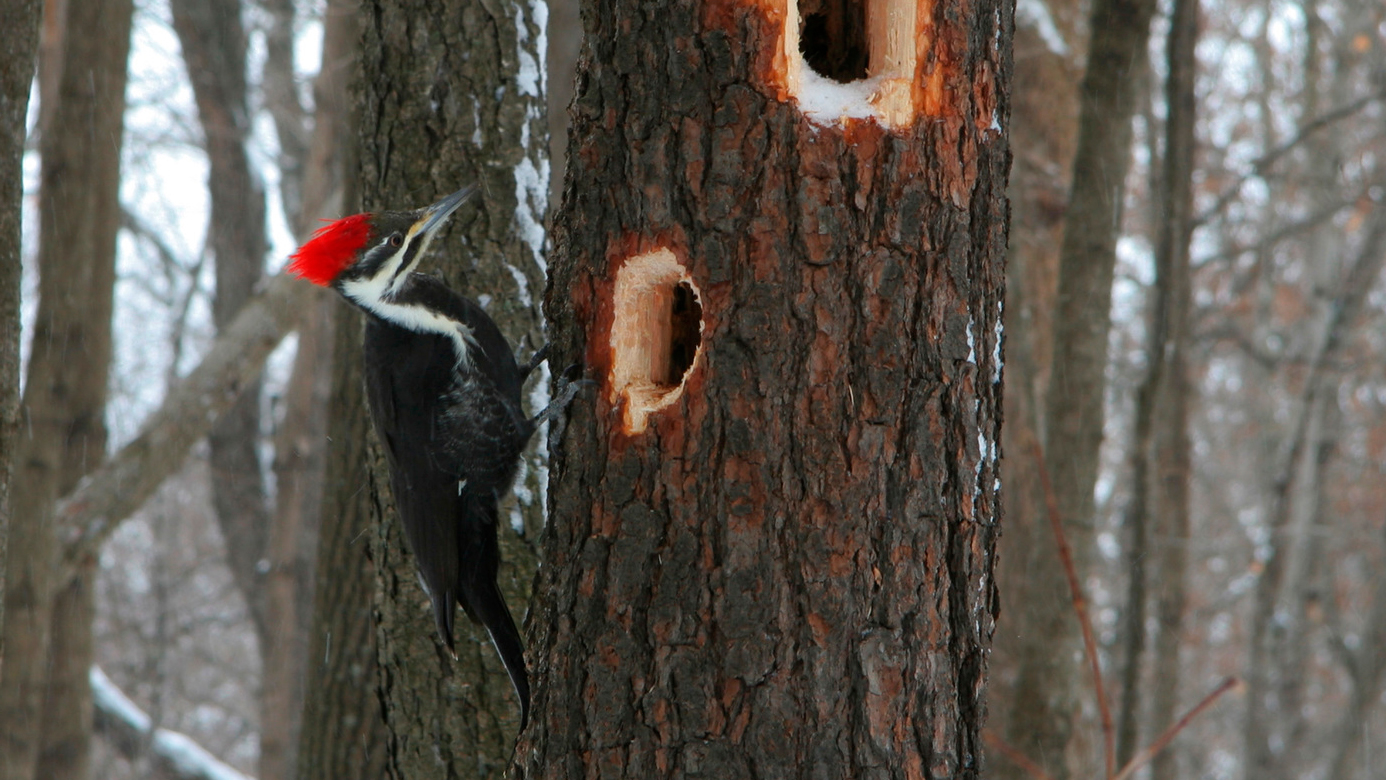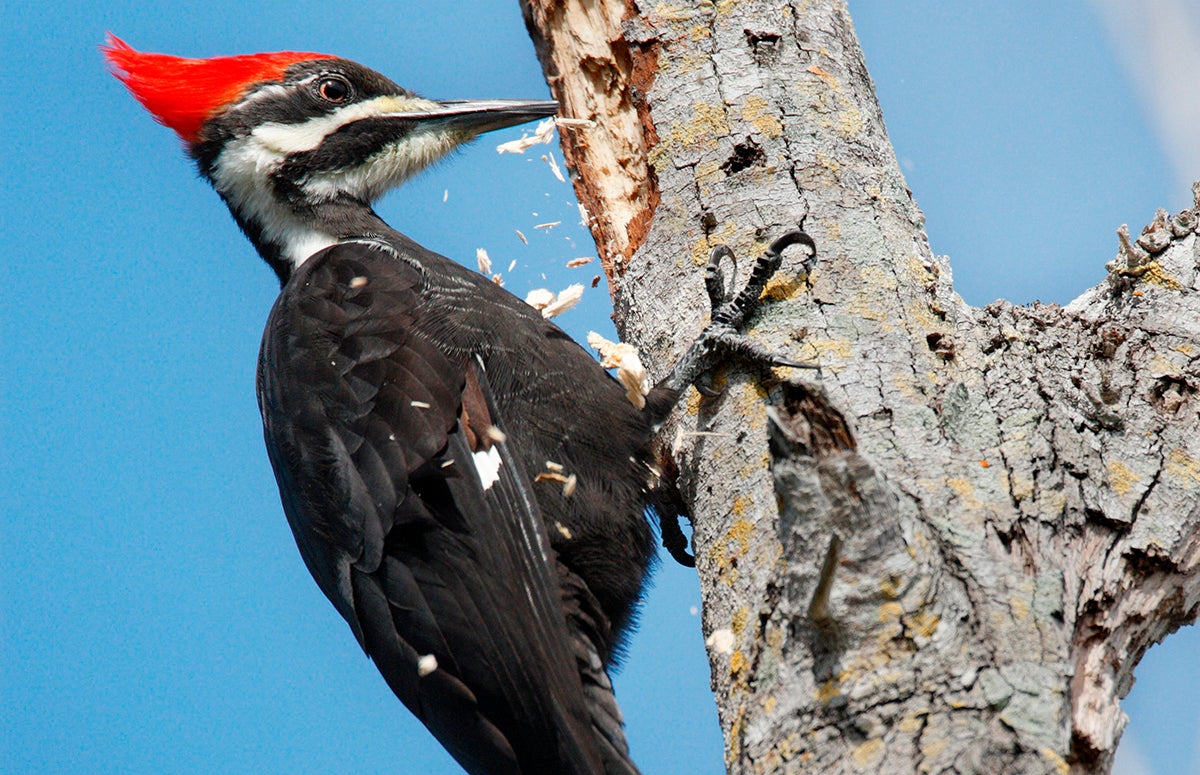Woodpeckers in Florida: Nature, Ecology, and Preservation
Woodpeckers in Florida: Nature, Ecology, and Preservation
Blog Article
Woodpeckers: A Comprehensive Guide to Understanding These One-of-a-kind Birds
Woodpeckers, with their distinct actions and physical qualities, have actually long astounded the inquisitiveness of ornithologists and nature lovers alike. From their rhythmic drumming echoing via the timbers to their amazing adaptations for scaling tree trunks effortlessly, these birds provide an interesting study in bird biology. What genuinely sets woodpeckers apart is not just their striking appearance but additionally their crucial role in keeping the delicate equilibrium of communities. As we explore the complex composition, varied types, and eco-friendly relevance of woodpeckers, a deeper recognition for these unique birds and the enigmas they hold unfolds.

Woodpeckers' Drumming Habits
Woodpeckers exhibit a rhythmic and precise drumming actions that offers different necessary functions in their every day lives. This behavior is mainly associated with interaction, region defense, and foraging. The distinctive drumming sound is developed by the fast pecking of their beaks against tough surface areas such as tree trunks, branches, or perhaps metal objects.
Interaction is a critical element of woodpecker behavior, and drumming plays a substantial duty in this procedure. Woodpeckers use drumming to establish their existence, attract companions, and keep call with their companions and spawn. The regularity, intensity, and period of drumming series convey details messages to other woodpeckers in the area.
In enhancement to communication, woodpeckers utilize drumming behavior for region defense. Woodpeckers in Florida. The loud and recurring drumming works as a cautioning to possible burglars, signaling that the location is already claimed. By developing their territory via drumming, woodpeckers decrease the chance of disputes over valuable resources such as food and nesting websites
Additionally, woodpeckers also use drumming as a foraging technique. The balanced pecking aids them find pests hiding underneath the bark of trees by creating vibrations that interrupt the prey's cover-up. This actions showcases the adaptability and ingenuity of woodpeckers in using their drumming skills for several essential functions.
Unique Adaptations for Tree Climbing
Having actually understood the art of drumming to connect, safeguard territory, and forage, woodpeckers have evolved unique adjustments that promote their impressive climbing up capacities in their arboreal environments. Woodpeckers have zygodactyl feet, with 2 toes directing ahead and two toes directing backwards. These tail feathers offer stability and balance, enabling woodpeckers to maneuver up tree trunks with accuracy and dexterity.
In addition, woodpeckers have effective neck muscle mass and an one-of-a-kind head framework that aid in their climbing capacities. Their solid neck muscle mass enable them to rapidly eat tree bark without experiencing whiplash, while their thick head and little brain serve as shock absorbers, protecting them from the influence of duplicated drumming. These adaptations collectively make it possible for woodpeckers to browse the upright world of trees with efficiency and elegance.

Role of Woodpeckers in Ecological Communities
By foraging for pests under the bark of trees, woodpeckers aid manage insect populations, protecting against break outs that can damage the total wellness of the woodland. Furthermore, woodpeckers produce cavities in trees that offer as crucial nesting sites for a variety of other bird types, advertising biodiversity within the ecosystem.
Moreover, the drumming and vocalizations of woodpeckers play a vital duty in interaction and area establishment. These sounds not just offer to attract mates yet likewise assist define borders in between different woodpecker territories, lowering Our site disputes and promoting a harmonious conjunction within the woodland community. Overall, the visibility of woodpeckers in forest communities highlights their importance as keystone varieties, influencing the dynamics and operating of these anchor habitats in multifaceted means.
Composition: Specialized Beaks and Feet
In the detailed web of woodland ecosystems, the specialized beaks and feet of woodpeckers are necessary adaptations that enable them to fulfill their vital ecological functions. Woodpeckers have unique anatomical attributes that are specifically created to assist them in their foraging and nesting behaviors.
The most distinctive function of woodpeckers is their solid, chisel-shaped beaks. These beaks are flawlessly adapted for drilling right into timber to reveal insects, larvae, and sap covert beneath the bark of trees. The strong muscle mass and tough try here structure of their beaks allow woodpeckers to peck at a price of approximately 20 times per secondly without creating damage to their skulls.
In addition, woodpeckers have specialized feet that aid in their acrobatic climbing capabilities. Their feet have 2 toes aiming onward and 2 toes aiming backward, offering a strong hold on upright surface areas (Woodpeckers in Florida). This one-of-a-kind foot arrangement, along with stiff tail plumes that work as an encouraging prop, allows woodpeckers to cling to tree trunks and branches with ease while they look for food or excavate nesting cavities
Woodpecker Types Variety
Woodpeckers are a varied group of birds found throughout different ecosystems worldwide, with over 200 well-known varieties displaying adaptations to various atmospheres. Woodpeckers have advanced to populate a range of settings, from forests and woodlands to meadows and deserts, each offering distinct challenges that have affected the development of distinctive woodpecker types.
These adaptations make it possible for woodpeckers to forage efficiently in their particular environments, lowering competition among types and advertising niche differentiation. Furthermore, geographical seclusion and historic factors have played a function in shaping the circulation and variety of woodpecker varieties, leading to the wide range of specialized adjustments seen in these remarkable birds.

Verdict
In final thought, woodpeckers are fascinating birds that display unique drumming habits, specialized adjustments for tree climbing, and play essential duties in ecosystems. With a diverse array of woodpecker types located worldwide, these birds are important for preserving the health and wellness and balance of woodlands and timberlands.
Report this page